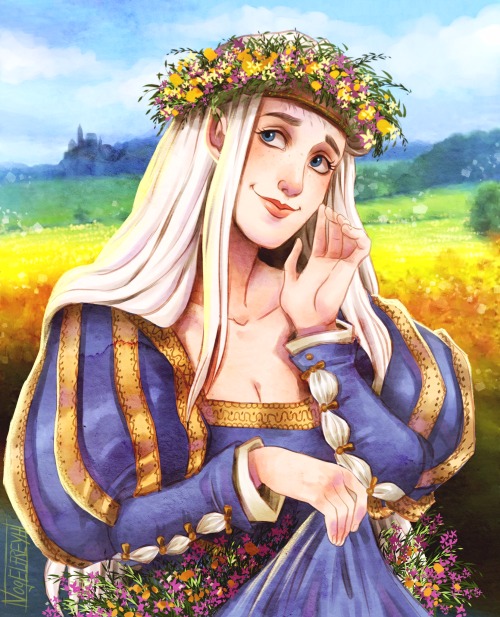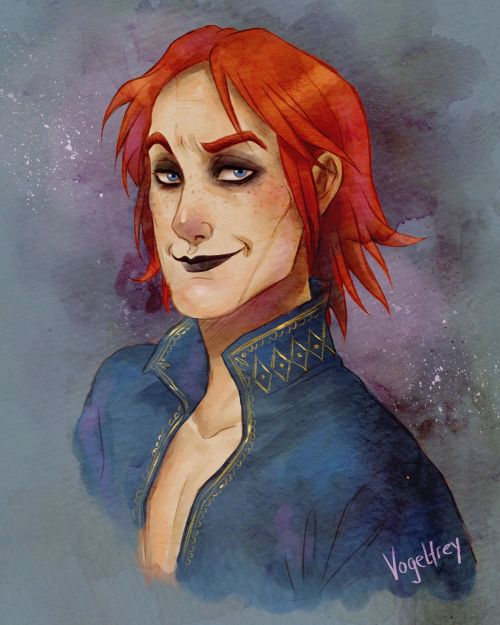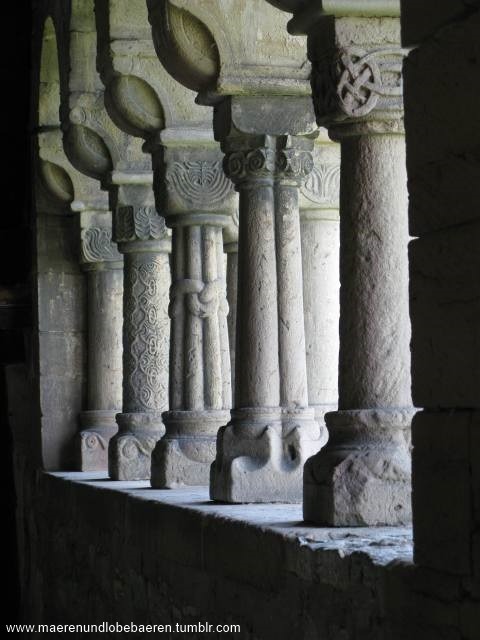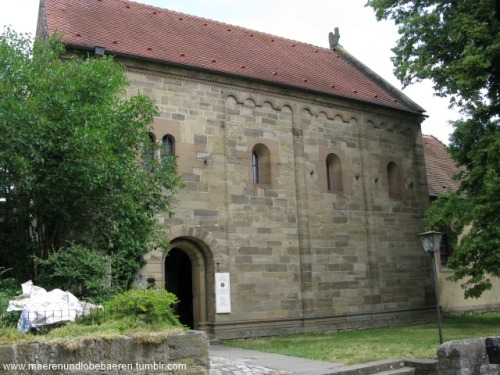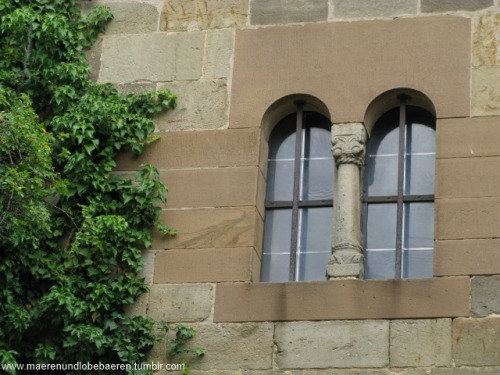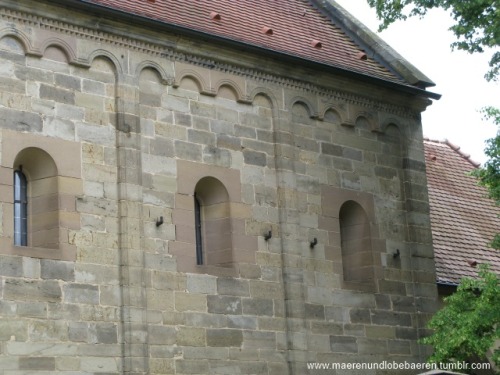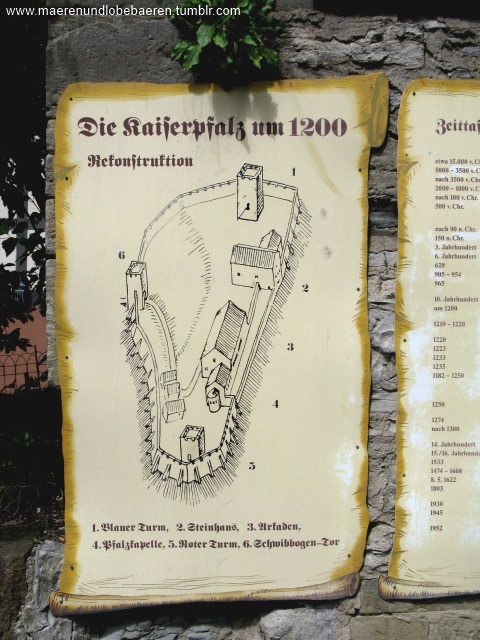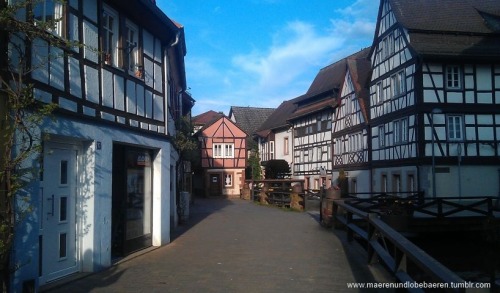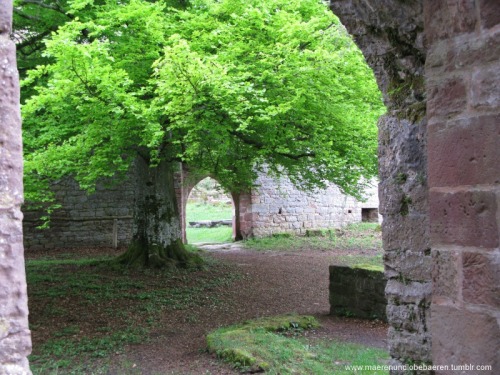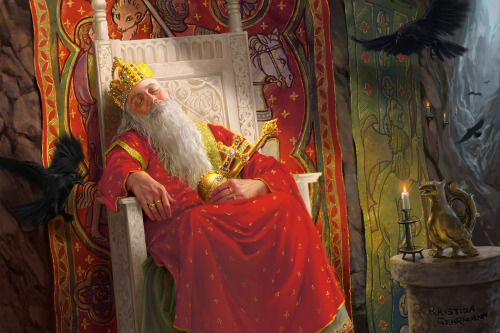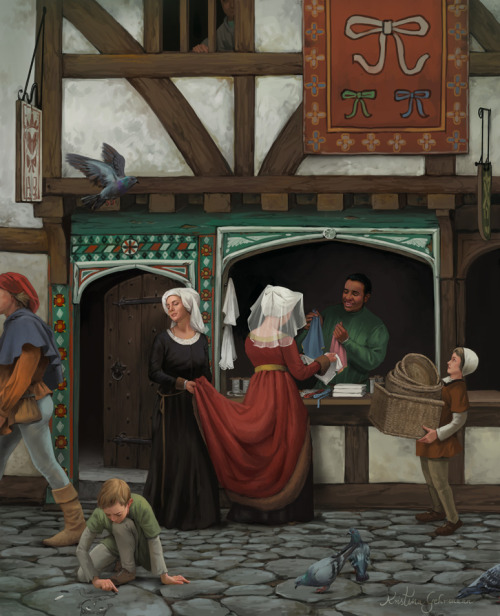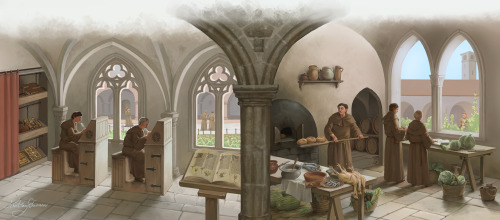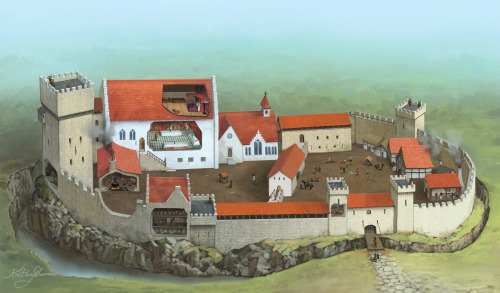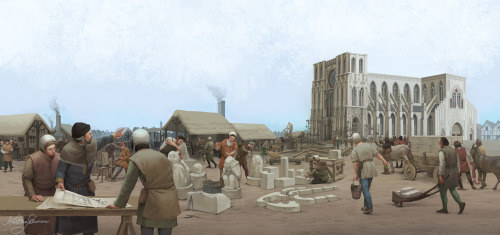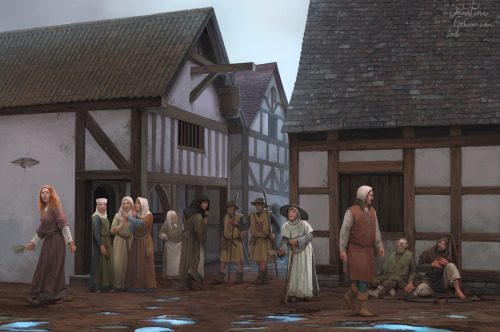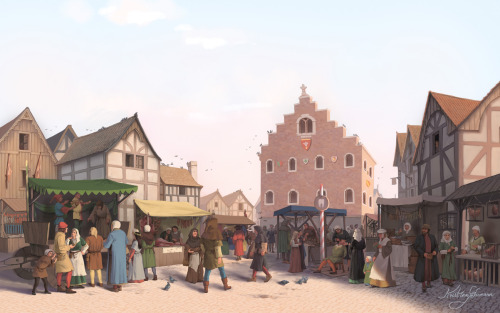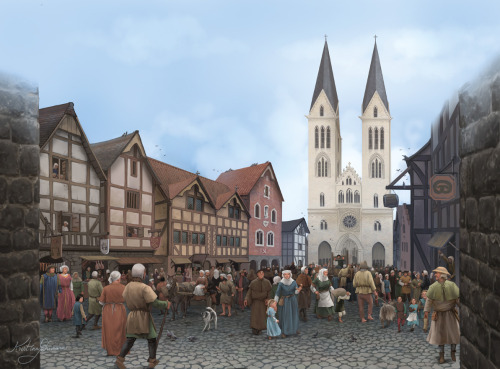#mittelalter
River running through town.Photos from our visit Schwäbisch Hall six weeks ago. It’s also proof that we can take pictures at noon an when it’s 35°C.I have never been a person who is fond of sightseeing. Having grown up in a tourist-town I am never comfortable when I feel like I am a tourist somewhere. It doesn’t go away completely, but when I go there with the purpose to create art, I feel a lot less awkward.When Mornienna and I visited Schwäbisch Hall, it had been very hot for weeks and the river was not very high in water. Kids were playing on the riverbank, but we managed to get the space for ourselves for am bit after they left.
Post link
Lecture: Fighting with the viking shield (by Roland Warzecha)
Roland Warzecha from Hammaborg lectures at Moesgård Museum about the biomechanics of medieval sword fighting and the use of the viking round shield. He demonstrates how to fight with the edge of the shield and how the viking shields boss may have acted as a sword catcher (and not as a weapon for punching).
♦️ Spring Days ♦️
I wanted to draw something with flower crests and spring meadows So I used the possibility to draw a single picture of Yonviagain!
This was before her mother died and before she went sick and Roderick forbid her to leave the castle.
She always enjoyed riding out, enjoying nature and collecting flowers. She never really wanted to understand why Roderich kept her locked up in the castle later on…even though he only did it because he was scared for her.
This picture is based on a painting of Alexandre Cabanel (1823 - 1889)
(Arro von Spey & Ellyonvi are my OCs from my story ‚VOGELFREY‘)
Post link
♦️ ♦️ Jester ♦️
DrawingArro without his signature jester head reaaally gives me a strange feeling xD
But it’s nice to see him without from time to time haha!
The chance of seeing him without hat is the same chance as winning the lottery. He totally lives his jester self, and no matter how silly that stupid hat looks, he loves wearing it.
Becoming a jester saved him from dying on the streets, so it simply became an important part of him. ❤️
…as well as smearing coal on his lips and eyes. Stupid clown
(Arro & Yonvi are my OCs from my story ‚VOGELFREY‘)
Post link

These two really deserve a moment of peaceful togetherness without having to think about all the danger that awaits them in every corner. They barely sleep in taverns and try to stay away from towns, so the best places for them to spend the night in are basically abandoned barns, shacks and ruins. Sometimes they even sleep under the bare sky. But snuggling up against eachother in the hay is a welcome blessing. And a good way to get rid of wet clothes …
They both know that they basically don’t have anything. But their love and bond gives them a strength that never fades. ❤️❤️
I just live for drawing fluff with these two ahh! ClaudiusandYonvi deserve it so much!
I’ve been drawing on this since a week step by step, due to being on a trip with my dad. But I really love how it turned out!
It’s so warm and cozy!
(All characters are my OCs from my story ‚VOGELFREY‘ ©️) #vogelfreyjesters

A dancing scene by the bonfire at the time Yonvi and Claudius travel with a Roma group. That’s why they’re also wearing different clothing. I really love Claudius embracing his roots ahh …
So they all sat together by the fireplace and as the music began to play they also started dancing. Just look at them - they really lose themselves into this very moment and just enjoy every second of it. At this time they already went through a lot together and their bond had become unbreakable, just like their love! ❤️
(All characters are my OCs from my story ‚VOGELFREY‘ ©️) #vogelfreyjesters
Colonnades at the Imperial Palace of Bad Wimpfen (~1160)
These paired columns of the Imperial Palace of Bad Wimpfen are not open to the public.They are somehow hidden high in the outer Wall. The can be accessed by a wooden flight of stairs. The room itself is separated by a barred door.
Post link
Chapel of the Imperial Palace in Bad WImpfen/Germany (~1160)
The “Pfalzkapelle” hasn’t lost it’s awe inspiring effect. It’s facade is styled to be a reminder for the people going to mass of who is in charge.
Holy roman emperor Friedrich I. Barbarossa had it’s own entrance to the chapel on the second floor, directly adjacent to the palace, which once stood on the left side. A transverse arched window with a very ornate column marks the inner gallery, where the emperor could follow mass, looking down on his subjects.
Their entrance lies directly beneath the emperors gallery, so they literally had to walk and stand beneath his feet. But that alone was not enaught for an emperor. The right side of the front shows two bass relief columns, framed by the worldly domain of the emperor. It’s like calling out: “You, who stand there, are all mine!”.
But even the emperors domain has a boundary: a sharp ledge on top of the wall marks the border between the mundane world and heaven, resembled by the rooftop.
The chapel originally had a romanic apsis, which was replaced in 1333 by a gothic choire (to be seen on the far right side). The chapel was dedicated to St. Nikolaus of Myra.
Post link
The “Steinhaus” in Bad Wimpfen/Germany (~1217)
The Stonehouse was the biggest house of the Imperial Palace. It’s main entrance to the living quarters could only be reached by an outer wooden stairway. The original Door may have been in the second floor, where the seven-piece-window sits. It was integrated around 1400 and is five meters wide.
It’s first floor was used during the middle ages for storage and domestic purposes. It’s wide doorway lies now several meters above street level, but must have been back in the day level with the street (as you can see it’s foundation now layed bare).
It’s backside was directly built over the defensive outer wall. A small doorway - now blocked - lead from the northeastern corner of the building directly onto the parapet.
Even today the house appears very big and massive. It is housing a museum which features a small exhibition of medieval and roman findings from Bad Wimpfen.
Post link
View from the blue tower in Bad Wimpfen/Germany
What you see here is pretty much all that’s left of the Kaiserpfalz (Imperial Palace) in Bad Wimpfen/Germany, which dates back to 1182. To the left you can see the river named Neckar. The so called “Steinernes Haus” (House built of stone) is directly in front of the view. Right behind of that house stood once the Imperial Palace. But only parts of it’s outer wall and rows of very intricate columns remained of it though.
The gable peeking out behind the House of Stone is part of the Pfalzkapelle, the emperors own little chapel. It is build from stone, too, and was enlarged in later centuries.
In the rear you can see the Red Tower. In my opinion this is the building with the most “staufisch” look. It features the squared stones, typical for castles by the Hohenstaufen Dynasty. The tower and the adjecent battlements are open to the public and can be climbed.
For better orientation have a look at this reconstructional plan of the imperial palace.
Post link
The blue tower of Bad Wimpfen/Germany
Indeed, this is the western tower of the 12th century Imperial Palace of the Hohenstaufen Dynasty in Bad Wimpfen. It has been enlarged several times during the last 800 years and it was rebuild time and again, since it had been struck by lightning several times, resulting in castatrophic fires (the last of which was in the 1980s).
The tower is now 58 meters high. To high for it’s walls, which show deep cracks and threaten to collapse. They were just recently supported with wooden beams and a metal frame.
I guess part of the problem is the enlarging of the tower. During the 13th century, the tower may have been serveral storeys lower. With the downfall of the Hohenstaufen Dynasty the tower was used by the citys denizens as a watchtower. It was remodelled and got it’s blueblack slate roof from which it’s name derived. The second tower of the castle - called the red tower - may have had in contrast a red brick tile roof.
The view from the top of the blue tower is gorgeous. Yes, I climbed all of the 167 steps to the parapet in 32 meters height.
Post link
Plan of the Imperial Palace in Bad Wimpfen/Germany
I am beginning this series of photos with this shot of a reconstructional plan of the Imperial Palace in Bad Wimpfen/Germany. Nowadays the site is a prosperous little city, towering high over the river Neckar.
In 1182 Holy Roman Emperor Friedrich I. Barbarossa founded this largest imperial palace north of the Alps on the hilltop, where once an even older, celtic castle stood.
In 1200 the castle was fully developed: Two towers were guarding it, and there is archaelogical evidence of a third tower between the gatehouse and the blue tower. A representative palace, not unlike the one in Gelnhausen, was located on the hillside, overlooking the Neckar.
Accessible directly from the palace was a chapel with an inner balcony, reserved for the emperor alone. A third stone build house is located between the blue tower and the palace.
All of these structures - with exception of the palace itself - have survived. But they are embedded into the cityscape, so a visitor has to look twice sometimes, to spot the traces left by the Hohenstaufen Dynasty.
Post link
Dusk in Annweiler am Trifels (Palatinate Forest, Germany)
The city of Annweiler is first mentioned in the year 1086. Etymology suggests, that it was founded during the 7th or 8th century, presumably by a frankish peasant called Anno or Arno.
From 1125 to 1298 the imperial insignia, including the crown of the Holy Roman Empire of German Nation, were kept secure in the nearby Trifels castle. From 1193 to 1194 king Richard, the Lionheart was hold ransom in the same castle.
In 1219 emperor Friedrich II. gave Annweiler the privileges of a town.
Post link
Under der Linden (~1200, Walther von der Vogelweide)
Under der linden
an der heide,
dâ unser zweier bette was,
dâ muget ir vinden
schône beide
gebrochen bluomen unde gras.
Vor dem walde in einem tal,
tandaradei,
schône sanc diu nahtegal.
Ich kam gegangen
zuo der ouwe,
dô was mîn friedel komen ê.
Dâ wart ich enpfangen,
hêre frouwe,
daz ich bin sælic iemer mê.
Kuster mich? Wol tûsentstunt:
tandaradei,
seht, wie rôt mir ist der munt.
Dô het er gemachet
alsô rîche
von bluomen eine bettestat.
Des wirt noch gelachet
inneclîche,
kumt iemen an daz selbe pfat.
Bî den rôsen er wol mac,
tandaradei,
merken, wâ mirz houbet lac.
Daz er bî mir læge,
wessez iemen
(nû enwelle got!), sô schamt ich mich.
Wes er mit mir pflæge,
niemer niemen
bevinde daz, wan er und ich,
und ein kleinez vogellîn -
tandaradei,
daz mac wol getriuwe sîn.
(Photo: Wildenburg, Amorbach/Germany)
Post link
“The Emperor’s Sleep”
Frederick I “Barbarossa” died in 1190. But according to a legend he is only asleep, in a chamber deep in the Kyffhäuser mountains, awaiting the time for his return to the world.
Personal work, Photoshop & Wacom Intuos
Post link
A haberdashery shop in a town c. 1440s.
DID YOU KNOW? The Middle Ages were more colorful than pop culture would have us believe. From the Viking age Europeans had available a rainbow range of affordable plant dyes, so even peasants might have had an item of colorful clothing or two, even if they weren’t high quality or durable. Painted cloths decorated interiors of those who couldn’t afford tapestry, and here one is hanged outside to decorate and advertise the merchant’s shop. Houses and facades were painted with color by anyone who could afford it. Statues were often painted in bright colors.
Medium: Photoshop and Wacom Intuos tablet
Post link
Scenes of medieval life
Some double page spreads I illustrated for “Geheimnisvolle Welt des Mittelalters” (Germany) a childrens’ nonfiction book about the Middle Ages.
Post link






